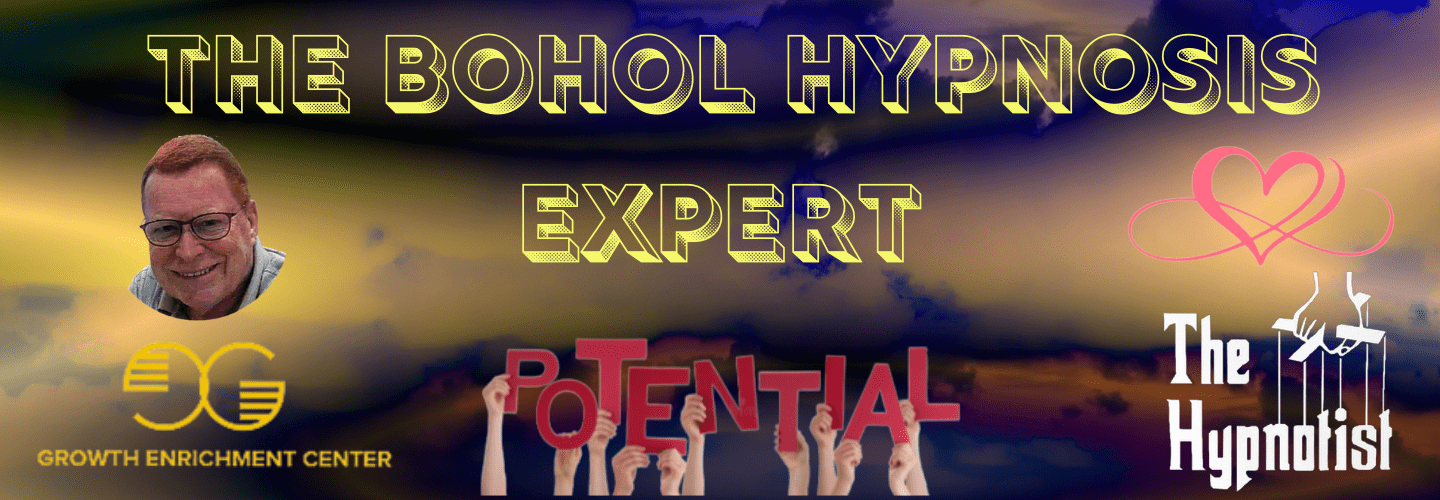
Harness the power of hypnosis, EFT, and NLP to overcome cyberchondria fears. Hypnosis reprograms negative thoughts and induces calm. EFT rebalances energy and reduces anxiety through tapping. NLP challenges negative beliefs and offers practical tools for healing. Combined, they release subconscious barriers and foster holistic wellbeing. Begin your journey to freedom from cyberchondria fears with these transformative techniques.
Understanding Cyberchondria and Its Impact
Cyberchondria, a term used to describe excessive online health-related searches leading to heightened anxiety and unfounded self-diagnoses, has become a prevalent issue in today's digital age. Understanding the triggers that contribute to cyberchondria is essential in addressing this issue effectively. The easy access to a vast amount of health information online, coupled with the fear of missing a potentially serious diagnosis, often fuels the compulsive need to search for symptoms excessively.
Coping mechanisms play a significant role in managing cyberchondria. Developing strategies to limit online searches, verifying information with credible sources, and establishing boundaries for health-related browsing can help reduce anxiety levels. Additionally, practicing mindfulness, engaging in stress-reducing activities, and seeking support from healthcare professionals or therapists can provide valuable assistance in combating cyberchondria.
Benefits of Hypnosis for Cyberchondria

How can hypnosis serve as a beneficial tool in alleviating the symptoms associated with excessive health-related online searches and unwarranted self-diagnoses?
Hypnosis offers a powerful approach to addressing cyberchondria by tapping into the mind-body connection and triggering the relaxation response. By inducing a state of deep relaxation, hypnosis helps individuals access their subconscious mind, where beliefs and behaviors are deeply rooted. Through techniques like cognitive restructuring and subconscious reprogramming, hypnosis can assist in reframing negative thought patterns and replacing them with positive, empowering beliefs.
The relaxation response activated during hypnosis can counteract the anxiety and stress often associated with cyberchondria, promoting a sense of calm and mental clarity. This heightened state of relaxation enables individuals to confront their fears and anxieties surrounding health concerns in a more rational and composed manner. By addressing the root causes of cyberchondria at a subconscious level, hypnosis can facilitate long-lasting changes in behavior and thought processes, ultimately leading to relief from the overwhelming urge to constantly seek out online health information.
Exploring EFT Techniques for Relief

Utilizing Emotional Freedom Techniques (EFT) offers an innovative approach to addressing the underlying emotional triggers contributing to cyberchondria and promoting relief from excessive health-related anxiety. EFT tapping, a core component of this technique, involves gentle tapping on specific meridian points on the body while focusing on the anxiety-provoking thoughts or feelings associated with cyberchondria. This process aims to rebalance the body's energy system, reducing the intensity of negative emotions and promoting a sense of calm.
In addition to EFT tapping, incorporating relaxation techniques can further enhance the effectiveness of managing cyberchondria. Deep breathing exercises, progressive muscle relaxation, and guided imagery are examples of relaxation techniques that can help individuals experiencing cyberchondria to release tension, reduce stress levels, and cultivate a state of relaxation. By integrating EFT tapping with relaxation techniques, individuals can develop a holistic approach to address the emotional distress underlying cyberchondria, ultimately fostering a sense of emotional well-being and empowerment in managing health-related anxieties.
NLP Strategies to Overcome Fear

Implementing Neuro-Linguistic Programming (NLP) strategies equips individuals with powerful tools to conquer fear and regain control over their emotional responses. NLP techniques focus on the mind-body connection, recognizing how thoughts and emotions influence physical sensations. By understanding this connection, individuals can begin to unravel the root causes of their fears and anxieties.
One key NLP strategy for overcoming fear is cognitive restructuring. This technique involves identifying and challenging negative thought patterns that contribute to fear responses. Through NLP, individuals learn to reframe their beliefs and perceptions, replacing them with more thorough and empowering alternatives. By reshaping the way they think about their fears, individuals can effectively diminish their intensity and impact.
Furthermore, NLP provides practical exercises and visualizations that help individuals desensitize themselves to the triggers of their fears. By repeatedly exposing themselves to these triggers in a controlled manner, individuals can gradually reduce the fear response associated with them. Overall, NLP offers a holistic approach to fear management, empowering individuals to confront and overcome their fears with confidence.
Integrating Hypnosis, EFT, and NLP

Integrating hypnosis, EFT, and NLP offers a powerful approach to addressing cyberchondria. By combining these techniques, individuals can tap into the subconscious mind, release emotional blockages, and reframe thought patterns.
This integration provides a holistic method for resolving health anxiety and promoting overall well-being.
Techniques for Integration
To effectively combine the therapeutic modalities of hypnosis, EFT, and NLP in addressing cyberchondria, a seamless and strategic approach to their integration is essential.
The integration benefits of these techniques lie in their synergy, where each method complements the others to provide a thorough and effective treatment plan.
One technique for integration involves starting with hypnosis to access the subconscious mind, followed by EFT to release negative emotions and beliefs, and then utilizing NLP to reframe thought patterns and behaviors.
By strategically blending these approaches, therapists can create a powerful framework for helping individuals overcome the fear and anxiety associated with cyberchondria.
This combination offers a holistic and multi-faceted approach to address the root causes of this modern-day health concern.
Benefits of Combined Methods
When combining hypnosis, EFT, and NLP in addressing cyberchondria, a holistic and integrated approach emerges, offering a thorough method to alleviate fear and anxiety associated with this condition.
This integrated approach leverages the strengths of each technique, creating a holistic healing environment for individuals struggling with cyberchondria.
Hypnosis helps access the subconscious mind to reframe negative thought patterns, EFT targets specific fears through tapping on meridian points, and NLP provides tools for cognitive restructuring and behavior modification.
By integrating these modalities, individuals can experience a thorough and personalized treatment plan that addresses the root causes of their cyberchondria.
The benefits of this integrative approach go beyond symptom relief, empowering individuals to cultivate long-term emotional well-being and resilience.
Success Stories and Testimonials

As we move forward in our exploration of resolving cyberchondria through hypnosis, EFT, and NLP, it is important to highlight the profound impact of success stories and testimonials.
These stories serve as beacons of hope, illustrating the transformative power of these therapeutic modalities.
Through the lens of real-life experiences, we witness the tangible benefits of hypnosis, EFT for fear relief, and the efficacy of NLP techniques in overcoming cyberchondria.
Transformation Through Hypnosis
In the domain of hypnotherapy, remarkable transformations have been witnessed, showcasing the profound impact of the subconscious mind on individuals seeking positive change. Through hypnosis, individuals have experienced significant personal growth by tapping into the mind-body connection.
Many have reported overcoming deep-seated fears, phobias, and limiting beliefs that hindered their progress. Hypnosis has provided a powerful tool for accessing the potential within, enabling individuals to break free from negative patterns and embrace a more fulfilling life.
Clients have expressed gratitude for the profound shifts they have experienced, highlighting the effectiveness of hypnosis in facilitating lasting change. These success stories serve as a confirmation to the transformative power of hypnotherapy in guiding individuals towards a path of self-discovery and empowerment.
EFT for Fear Relief
Utilizing EFT for fear relief has yielded significant successes, with individuals sharing compelling testimonials of their transformative experiences. Many have found relief from debilitating fears through the practice of EFT, also known as Emotional Freedom Techniques.
By tapping on specific meridian points while focusing on the fear, individuals have reported a significant reduction in anxiety levels and an increased sense of calmness. One individual shared how EFT helped them overcome their fear of medical conditions, allowing them to live their life more fully without constant worry.
Another mentioned how EFT helped them address their fear of public speaking, enabling them to confidently communicate in front of large audiences. These success stories highlight the effectiveness of EFT in providing fear relief and improving overall well-being.
NLP Success Stories
Through the application of NLP techniques, individuals have shared remarkable success stories and testimonials showcasing the transformative power of Neuro-Linguistic Programming. Case studies reveal how clients have overcome deep-rooted fears and phobias, such as cyberchondria, through NLP interventions.
Clients consistently provide positive feedback on how NLP has helped them reframe their thoughts, manage anxiety, and regain control over their health concerns. One client reported a significant reduction in their compulsive need to search for health information online, leading to a newfound sense of calm and confidence.
These success stories highlight the effectiveness of NLP in addressing the underlying issues that contribute to cyberchondria, ultimately empowering individuals to live healthier, more balanced lives.
Frequently Asked Questions
Can Cyberchondria Be Completely Cured or Is It a Lifelong Condition That Can Only Be Managed?
Cyberchondria is a condition that can be effectively managed through various coping strategies and therapies. While complete cure may vary, long term outcomes and success rates show that with proper support, individuals can greatly reduce symptoms and prevent relapse.
Are There Any Potential Side Effects or Risks Associated With Using Hypnosis, Eft, or NLP for Treating Cyberchondria?
When considering the use of hypnosis, EFT, or NLP for treating cyberchondria, it is important to acknowledge potential risks. Safety precautions should be taken to guarantee the well-being of individuals undergoing these alternative therapies.
How Long Does It Typically Take to See Noticeable Improvements in Cyberchondria Symptoms Using These Techniques?
Starting on a journey towards overcoming cyberchondria involves a personalized progress timeline. The treatment effectiveness varies, but noticeable improvements often begin to manifest within a few weeks of consistent practice, offering hope and relief to individuals.
Is It Possible to Combine Traditional Therapy or Medication With Hypnosis, Eft, or NLP for a More Comprehensive Treatment Approach?
Integrative therapy offers a holistic approach to treating cyberchondria by combining traditional therapy or medication with complementary approaches like hypnosis, EFT, or NLP. This all-encompassing method addresses mental health from various angles, promoting more effective treatment outcomes.
Are There Any Specific Qualifications or Certifications That a Practitioner Should Have in Order to Effectively Use Hypnosis, Eft, and NLP for Treating Cyberchondria?
Qualifications and certifications are essential for practitioners to effectively use hypnosis, EFT, and NLP in treating cyberchondria. A study found that certified professionals had notably higher success rates in addressing mental health issues. Expertise matters.
Conclusion
To sum up, the combination of hypnosis, EFT, and NLP offers a powerful solution to combat the fear and anxiety associated with cyberchondria. By delving into the subconscious mind, releasing negative emotions, and reprogramming thought patterns, individuals can find relief and regain control over their health-related concerns.
Just as a skilled craftsman molds clay into a masterpiece, these techniques can shape a new, fearless mindset for those struggling with cyberchondria. Trust in the process and embrace the journey towards healing.
Take the Next Step
Do not be afraid to reach out to me, Mark E Wilkins, to assist you in any issues you might have. Most Hypnotherapy sessions last 2 hours and EFT Sessions are usually handled with one session. Life Coaching is 45 minute session, once a week. Self-Hypnosis is taught in one session, and lasts a lifetime.
To make an appointment, first listen to the Pre-talk and fill out he Complementary Healthcare Provider Disclosure. The use the Contact Form to request an appointment with the Bohol Hypnosis Expert.
Self-help downloads are available. The self-hypnosis program to teach you how to self-hypnotize is here.





